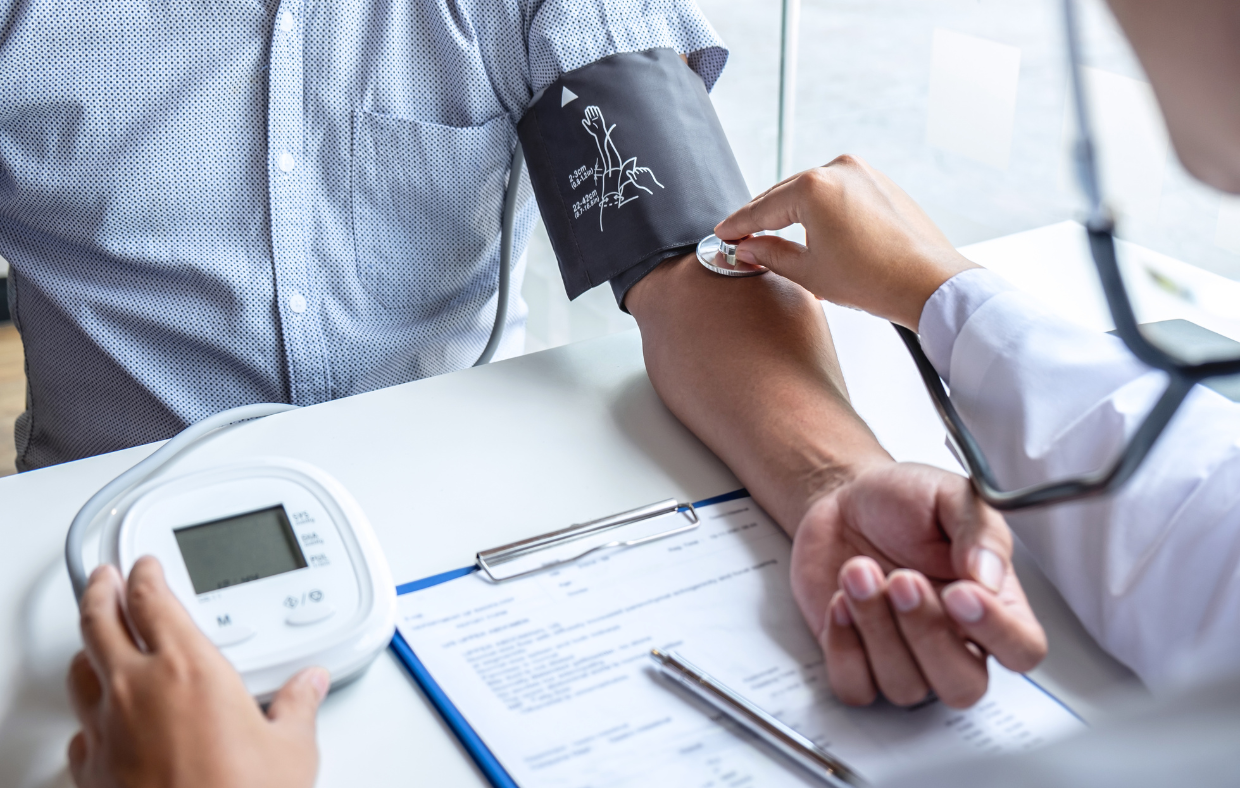Nearly half of all adults in the United States suffer from a common medical condition: hypertension. This is a big deal because hypertension—another term for high blood pressure—can cause serious damage throughout the body. The good news is that most people can lower their blood pressure through lifestyle changes, medication, or a combination of both.
Understanding hypertension’s causes and symptoms
Hypertension occurs when the blood vessels become tighter and stiffer than normal. When this happens, the blood pressure rises above a healthy level, and it becomes difficult for the body to transport nutrients and oxygen to organ tissues. Hypertension can lead to heart attack, stroke, kidney and liver problems, and damage to the small blood vessels in the eyes that can result in vision loss or blindness.
Hypertension builds slowly over time, and patients with hypertension often don’t show any symptoms. Although it is less common, symptoms do occur for some people with hypertension and can include headache, dizziness, blurred vision, ringing in the ears, and pressure in the chest. When someone experiences hypertension symptoms, they should contact their medical provider.
Making sense of blood pressure and learning how to manage it
Blood pressure is taken by measuring the pressure in the heart and blood vessels when the heart is active (systolic) and at rest (diastolic). Healthy blood pressure is defined as at or below 120/80 mmHg. Hypertension is diagnosed when blood pressure readings consistently measure at or above 140/90 mmHg. Both the top (systolic) and bottom (diastolic) numbers are important. These values together give the best picture of what is happening in the body.
Poor diet, lack of exercise, family history, socioeconomic factors, and stress can all lead to high blood pressure. Age is also a major factor. Blood vessels stiffen as we get older, much like a garden hose that’s been used season after season and left out in the sun. The good news is that even small changes to daily habits can help people reach a healthier blood pressure.
People with hypertension can reduce their blood pressure by exercising regularly (30+ minutes of moderate activity each day) and eating a healthy diet. Both the American Heart Association and the American College of Cardiology recommend the Dietary Approaches to Stop Hypertension (DASH) diet, which focuses on whole fruits, whole veggies, lean proteins, whole grains, reduced sugar, and reduced salt. Weight loss of even a few pounds can lower the blood pressure. Reducing salt, caffeine, and alcohol and avoiding nicotine products can also lower blood pressure, as can getting adequate sleep (at least seven hours per night) and reducing stress.
When should a patient contact their medical provider?
Medical providers will check the patient’s blood pressure during every office visit, and will track the readings over time. If they see a reason for concern, they’ll let the patient know. Beyond that, people should contact their medical provider if they show symptoms of hypertension: headache, dizziness, blurred vision, ringing in the ears, and pressure in the chest. For people without symptoms who measure their own blood pressure, it’s important to look at trends over weeks and months, not a single reading. Someone who consistently sees high blood pressure readings should schedule an appointment with their medical provider. A pattern of high blood pressure rarely improves on its own.
Addressing hypertension through lifestyle changes and medication can lead to better outcomes
We prescribe medication for hypertension when patients consistently show blood pressure readings over 140/90 mmHg. We also use medication if a patient is experiencing symptoms, or if they are asymptomatic but lab work indicates organ damage, even without a history of high blood pressure readings. Hypertension is like diabetes in some regards—it can be a silent killer because the harmful effects happen slowly over time. A patient may not realize that they have hypertension, but damage is repetitively occurring in the body’s small blood vessels before severe symptoms appear.
While hypertension should be taken seriously, it is important to remember that it’s treatable. There are many options for lifestyle changes, and pharmacological medications are effective and easy to tolerate. Whether or not they show signs of hypertension, patients should pay attention to how they feel, schedule regular medical check-ups, and limit or eliminate harmful substances like alcohol and tobacco to significantly improve their long-term health. Any patient who is diagnosed with hypertension can work with their medical provider to create a plan to reduce health risks.
Talitha Marty is a Physician Assistant at MCHC Health Center’s at Hillside-Ukiah.

 MyChart Login
MyChart Login

